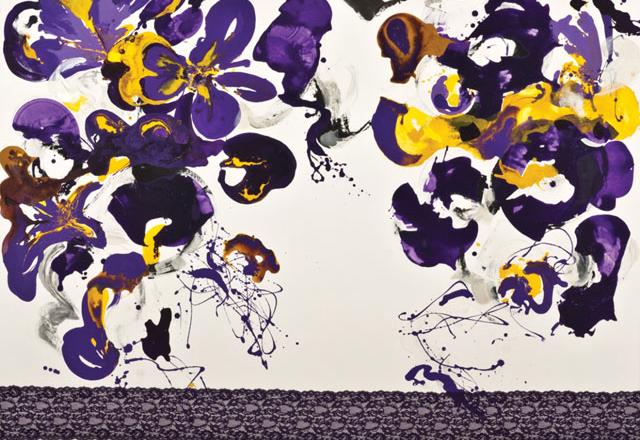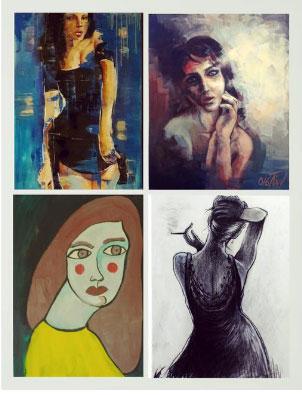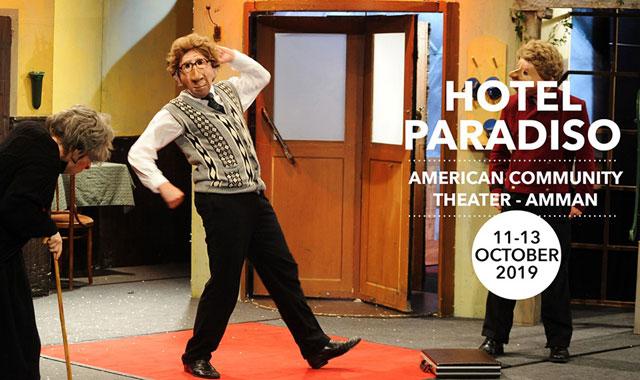You are here
Into another world
By Rand Dalgamouni - Nov 05,2014 - Last updated at Nov 05,2014

AMMAN — Like the introductory musical improvisation, known as taqsim, which is played at the beginning of a traditional Turkish or Arabic music piece to draw the listener in while holding so much promise, Fusun Caglayan’s works of abstract art lure one into another world — that of limitless imagination.
Riffing on the fluid nature of taqsim, Caglayan takes the music into its visual representation, creating beautiful pieces of acrylic and oil on canvas that have no beginning and no end.
Although a recurrent rose motif is present in her artwork on display at Dar Al Anda Art Gallery — what she describes as “rose taqsim” — each painting opens the door to an endless trail of interpretation.
What may seem at first as blobs of different colours that clash or combine in natural harmony become roses, flower petals, butterflies, faces, silhouettes, or ocean waves, and so much more in the eyes of the viewer.
Her paintings are at once all of these images and none of them, riffing on each viewer’s unique experiences and interpretations, not unlike the inkblots of the Rorschach test.
“My main theme is the juxtaposition of contrasting elements of fragility and violence in a unified whole in… daily life,” Caglayan wrote.
“Today, there is a fragmentation process under way all around the world, because of the loss of the sense of unity that permeates the human condition,” she added.
In “Silver Rose”, splashes of grey and black are spread unevenly on a white background as hints of light pink and deep red dot the painting.
While some of the splashes may be interpreted as the titular rose, the piece offers deeper levels of meaning, going beyond the initial shape of the rose into complex overlapping brush strokes, only to return to the rose on the surface, in a manner similar to the way a taqsim starts with one maqam or mode and evolves beyond it, before returning to its roots at the end.
For the Turkish artist, “Silver Rose” is representative of the collection’s theme.
In “The Rite of Spring”, an explosion of colours bursts out of the canvas, hiding infinite shapes and possibilities, while “The Wave” spells a sense of gloominess with its dark shades of blue and sepia, as its unsettling calmness may be the harbinger of a coming storm.
Caglayan, an art professor, said the musical influence on her work originally started with jazz, a music genre rooted in improvisation, and then moved into taqsim, in a nod to the similarities and differences between Eastern and Western cultures.
“We are looking at Western art and trying to find ourselves,” she said.
The artist, who sees her artworks forming “pieces of an autobiographical story”, said she is influenced by Western abstract art, Eastern calligraphy, and Anatolian traditional art, drawing from the rationalism of the West and the intuitive perception of the East.
In a piece named “Improvisation”, strokes of deep red and grey intertwine, fighting for control over the canvas and dripping trails of colour in their wake as they remain stuck in seemingly perpetual motion.
“The problem with improvisation is sometimes there is no end,” Caglayan told The Jordan Times, adding that it is difficult to decide when a painting is ready.
She said her knowledge of the classical rules of art aided her in finding the right way to end each piece, indicating that even when improvisation is heavily used, rules cannot be totally abandoned.
The exhibition, titled “Taqasim of Silver”, continues through November 25.
Related Articles
AMMAN — The Zara Gallery on Wednesday inaugurated a group exhibition by Jordanian female artists, under the title “Delicate Lines of Strengt
AMMAN — Music, painting and the human soul have found a place in the work of Jordanian artist Zaid Shawwa, now displayed under the title “Wa
AMMAN — The Berlin-based mask theatre company Familie Flöz performed three public shows on Friday, Saturday and Sunday and two additional sh

Opinion
Apr 09, 2025
Apr 08, 2025
- Popular
- Rated
- Commented
Apr 08, 2025
Apr 09, 2025
Newsletter
Get top stories and blog posts emailed to you each day.

















